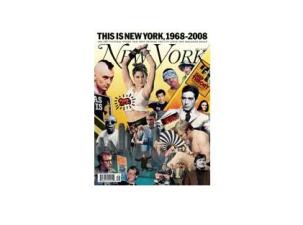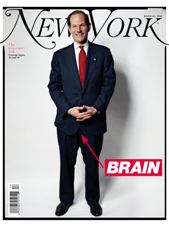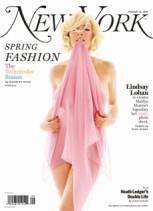Magazine and Online Publishers Reinventing Business Models to Extend Brand Value. Profiling <i>New York</i> Magazine, ADSDAQ Exchange and AOL Platform-A. JackMyers Think Tank

New York Magazine, celebrating its 40th anniversary this year, is reinventing the brand across non-print assets to reinforce the publication's long-standing brand equity. Publisher Larry Burstein tells JackMyers Media Business Report that digital advertising has doubled in the past two years and now represents 25 percent of the magazine's revenues. This year, parent company New York Media launched an events division, New York Events, to tap into the more than $17 billion in event sponsorship revenues and 15 percent annual category growth (Read JackMyers Spending Forecast).
As more media companies develop event divisions, they are learning that strong brand equity is a prerequisite for success, and New York has strong and established editorial brands that are ideal for event extensions, Burstein told JackMyers Media Business Report. Planned events include Best Bets, Taste of New York and New York KidShop, a one-day event planned for December 6 that will showcase multiple brands offered at discounted prices. New York by New York is a yearlong event series, in its second year, that gives young New Yorkers new ways to interact with the brand, with subscriptions included in the ticket price. Forty Nights is an anniversary-specific event series running through the end of the year, celebrating all facets of what’s great about New York – both the media company and the city.
Burstein also points to the growing emphasis on building editorial brand extensions in digital media. "We have a real online business with real audiences, delivering five million monthly unique readers and only five percent audience overlap with the magazine," Burstein points out. Magazines, which typically have small sales organizations and even smaller digital sales staffs, are at a distinct disadvantage compared to the large sales staffs deployed by the leading online sales organizations. Trying to break through the organizational silos at media agencies, which typically separate print from online buying and planning units, creates even greater challenges. "Magazines have to compete on every level and in a more complex environment," Burstein acknowledges. "Our strong brand equity is our greatest asset and event programs enable us to break down traditional silos at agencies and clients."
Publishers such as Forbes and Martha Stewart, which have strong presence in online and print media, are expanding their web audience by creating their own networks of long-tail content and increasing the value of their online content by tapping into contextual targeting resources such as ContextWeb, Inc., a leading contextual advertising company and operator of the ADSDAQ Exchange.
The ADSDAQ Exchange, says Wenda Millard, ContextWeb board member and president of media for Martha Stewart Living Omnimedia, enables publishers to optimize the value of their inventory and avoid commoditization, while delivering increased value to advertisers through contextual targeting.
A recent ADSDAQ-funded research study by OTX established that seeing an ad "in context" on a web page has a direct, positive impact on ad effectiveness, demonstrating that relevant contextual placement improves brand recognition and ad recognition over neutral page placement, as well as outperforming "out of context" online advertising.
The new ADSDAQ Exchange Agency Trading Desk enables media buyers to evaluate, in real time, how their web ad campaigns are performing. Using this knowledge, they can instantly buy more ad inventory in the better performing contextual areas and offer to sell inventory that is underperforming. The ADSDAQ Exchange tracks campaign performance for nearly 400 contextual content categories.
Six major media agencies are currently testing the ADSDAQ Exchange Agency Trading Desk and several publishers are using ADSDAQ'sReach Extension Program, introduced last month, to add relevant associated content at networks of sites, providing advertisers with targeted audiences in complementary content beyond a publisher's own site.
Millard has been extensively quoted in the past several weeks after warning the online industry to beware of commoditizing its ad inventory, suggesting that online advertising was in danger of becoming "pork bellies." While her comments stirred an industry controversy and pork bellies were added as a special at Michael's restaurant on a day Millard visited, in reality all media are bifurcating into:
1. commodity inventory traded through automated transactional processes;
2. premium inventory packaged with branded, contextual and behavioral enhancements. New York's events and Martha Stewart's contextual campaigns are both examples.
AOL's Platform-A is similarly focusing on extending the Tacodabehavioral targeting models across the company's advertising groups as AOL positions itself to be "the Google of display advertising," comments AOL president Randy Falco. While building an automated interface to facilitate transactions, Platform A is emphasizing "the development of customer facing tools and resources to serve advertisers' marketing needs and solve their problems," adds Platform-A president Lynda Clarizio.
For more information on the ADSDAQ Exchange, contact SVP Jay Sears at sears@contextweb.com


